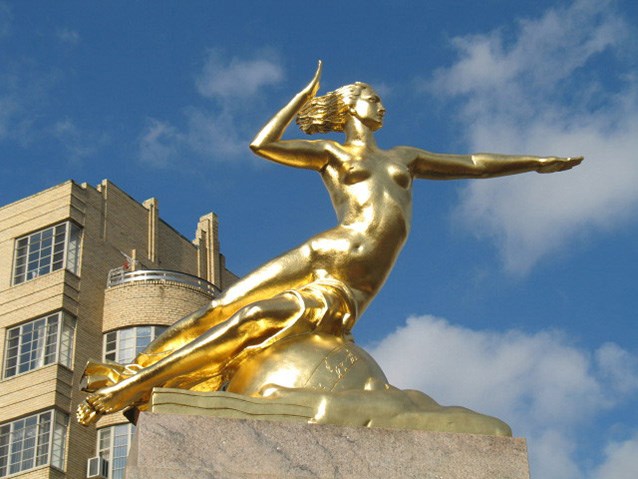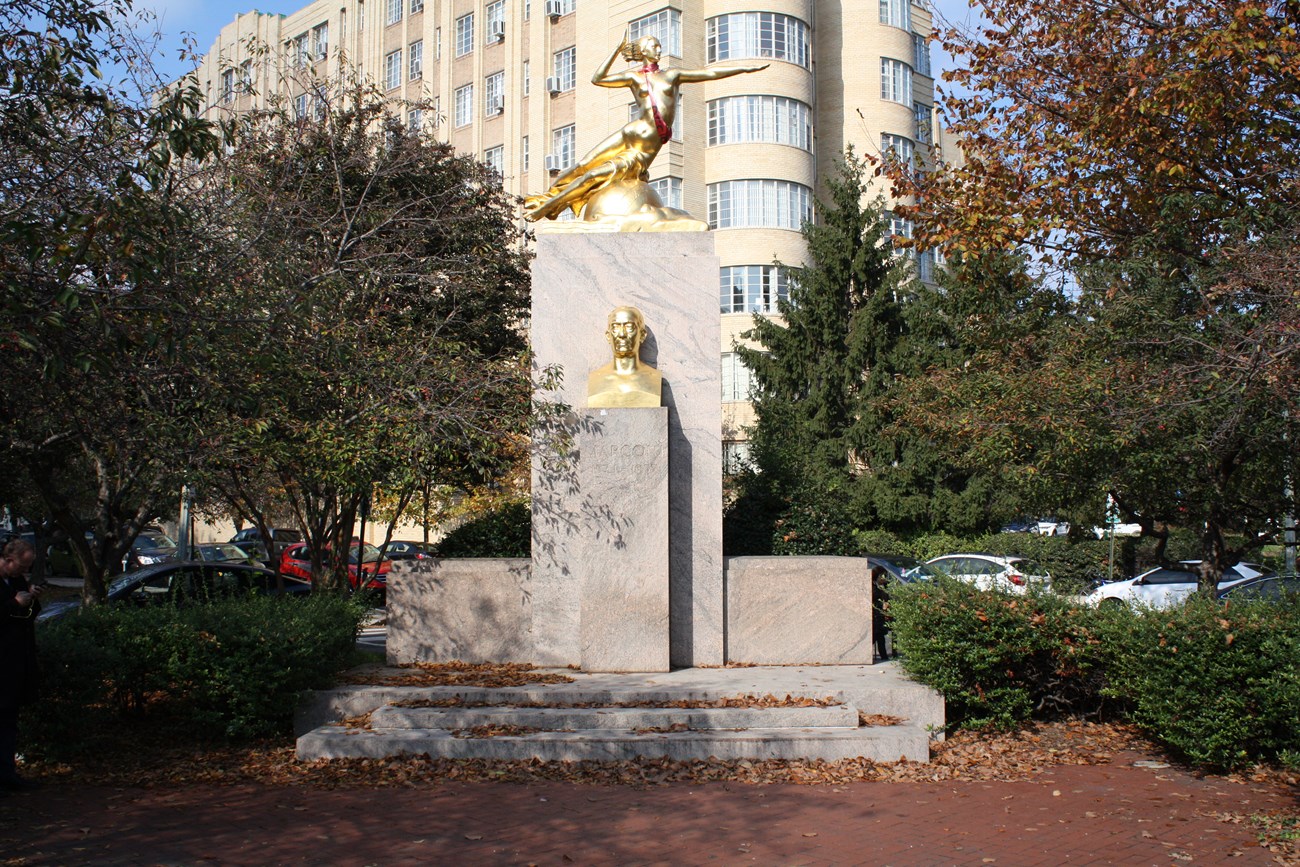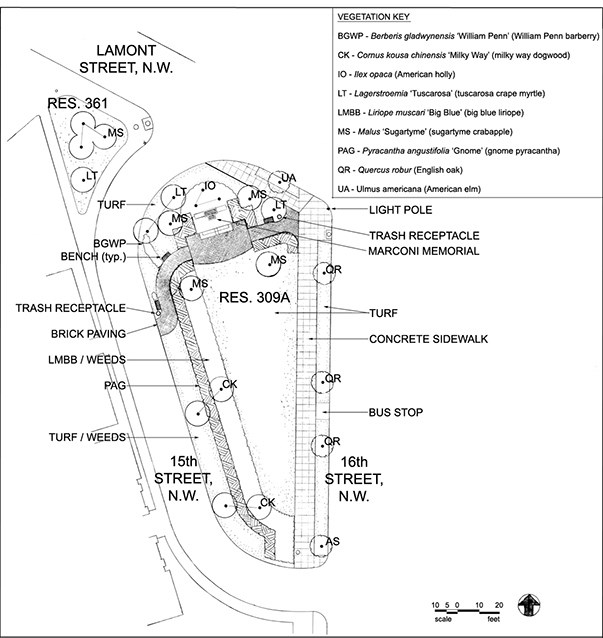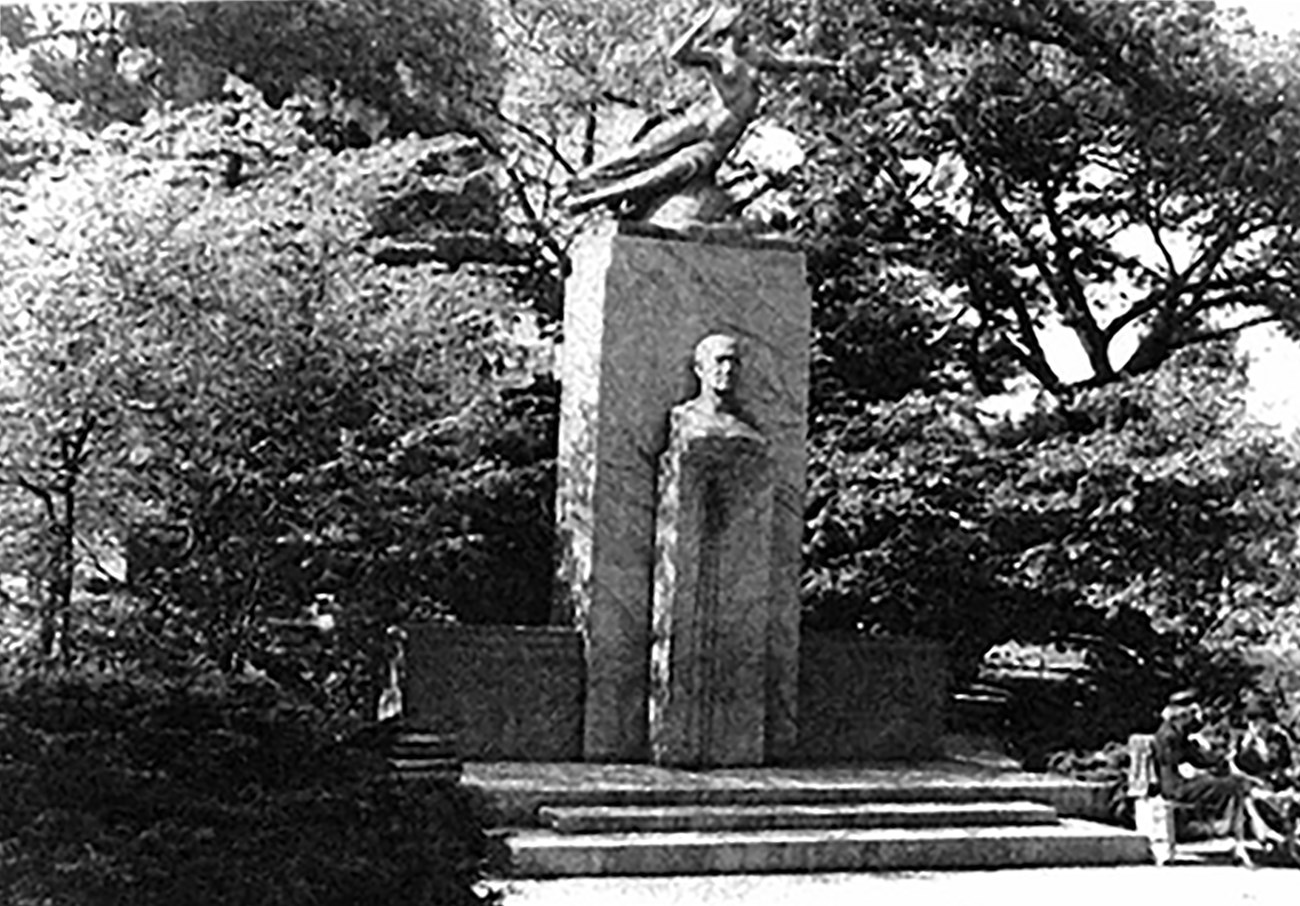Last updated: October 16, 2020
Article
Marconi Memorial Cultural Landscape

NPS (2007)
The Marconi Memorial cultural landscape, US Reservation 309 A, is located in NW Washington, D.C. and is bordered by Lamont Street NW to the northeast and 16th Street NW. The 0.23-acre reservation forms the middle of a chain of six discontiguous reservations located along 16th Street NW that are collectively known as the Mount Pleasant Parks and is an example of a DC Small Park. This reservation is administered by Rock Creek Park (ROCR). The period of significance for the Marconi Memorial is 1941 and corresponds to the memorial’s installation and dedication.
The memorial contributes to the Mount Pleasant Historic District, which was listed on the National Register on October 5, 1987. The upper 16th Street Corridor and Mount Pleasant developed as a result of the streetcar lines in Washington, DC. The cultural landscape is located north of the White House and Meridian Hill Park and east of Rock Creek Park.
NPS
The monument comprises a series of pink granite rectilinear masses and employs Academic Abstraction design elements, using Art Moderne stylistic details that were popular during the 1930s. The lowest component incorporates two steps leading to a broad platform. A narrow central pedestal bears a gilded bronze portrait bust of Guglielmo Marconi gazing southward.
Behind this pedestal stands a tall and broad granite slab which supports a gilded bronze sculpture comprised of electrical waves disappearing into clouds set beneath an emerging world. Atop the world sits a dynamic nude female with her left arm extending east and her right arm bent and pointing to the sky. The figure’s arms, the drapery around her legs blowing behind, and her wavy mass of stylized hair echo the electrical waves below, a nod to Marconi’s work in radio wave technology. The Marconi Memorial is the work of prominent sculptor Attilio Piccirilli.
The Guglielmo Marconi Memorial is significant as a rare example of the commemoration of an individual associated with technology in Washington, D.C. Marconi is credited with the invention of the first radio wave communication system. Congress approved legislation for the memorial on April 13, 1938 and President Franklin Roosevelt signed the bill into law the next day. The monument was erected by popular subscription collected by the Marconi Memorial Foundation, and was completed on June 30, 1941.

NCR CLP, 2007
The memorial statuary sits at the northern curved edge of the park. A red brick sidewalk, lined with two benches, separates the memorial from the wedge of lawn to the north of it. Funds for the memorial were raised by the Marconi Memorial Foundation. Its secretary, Samuel Di Falco, took umbrage at the initially proposed location for the memorial. Originally, the statuary were to be sited within Meridian Hill Park, where another notable Italian, the writer Dante Alighieri was already memorialized in stone. In an effort to appeal to modern-day Italian sensibilities, the new site for the Marconi Memorial was proposed, just one block away from where the Italian Embassy stood at the time.
Paragraph 5 The majority of the landscape features were designed by landscape architect Joseph Gardner in August of 1940 and included vegetation, bituminous concrete walkways, and a central area of turf. The most prominent feature is the statue of Guglielmo Marconi. Following the installation of the memorial to Guglielmo Marconi in 1941, the landscape of 309 A remained relatively unchanged until 1988. During this time, the vegetation was updated with disease-hardy and pest-resistant plants and the circulation pattern was modified. While making some changes, the new plan was sensitive to the original design intent. The vegetation, now Crepe Myrtle and Gnome Pyracantha, still frames and highlights the memorial.

Wymer Photograph, Kiplinger Library, Historic Society of Washington, DC
Just inside the reservation boundaries, a series of four benches faced outward. The median strip between the sidewalk and the street was lined with large deciduous trees, now elm trees.
Though in fair condition, the park is now subject to heavy pedestrian use, affecting the soil and vegetation of the park as well as the memorial itself. It also has lost relationship to the Italian Embassy, which now sits over a mile southwest of the park.
Quick Facts
-
Cultural Landscape Type: Historic Designed Landscape
-
National Register Significance Level: State
- National Register Significance Criteria: C
- Period of Significance: 1903-1941
Landscape Links
